This post may contain affiliate links. Please read our disclosure policy.
This Rosemary Sea Salt Keto Bread has all of the same flavor and texture of real bread, but with a fraction of the carbs.
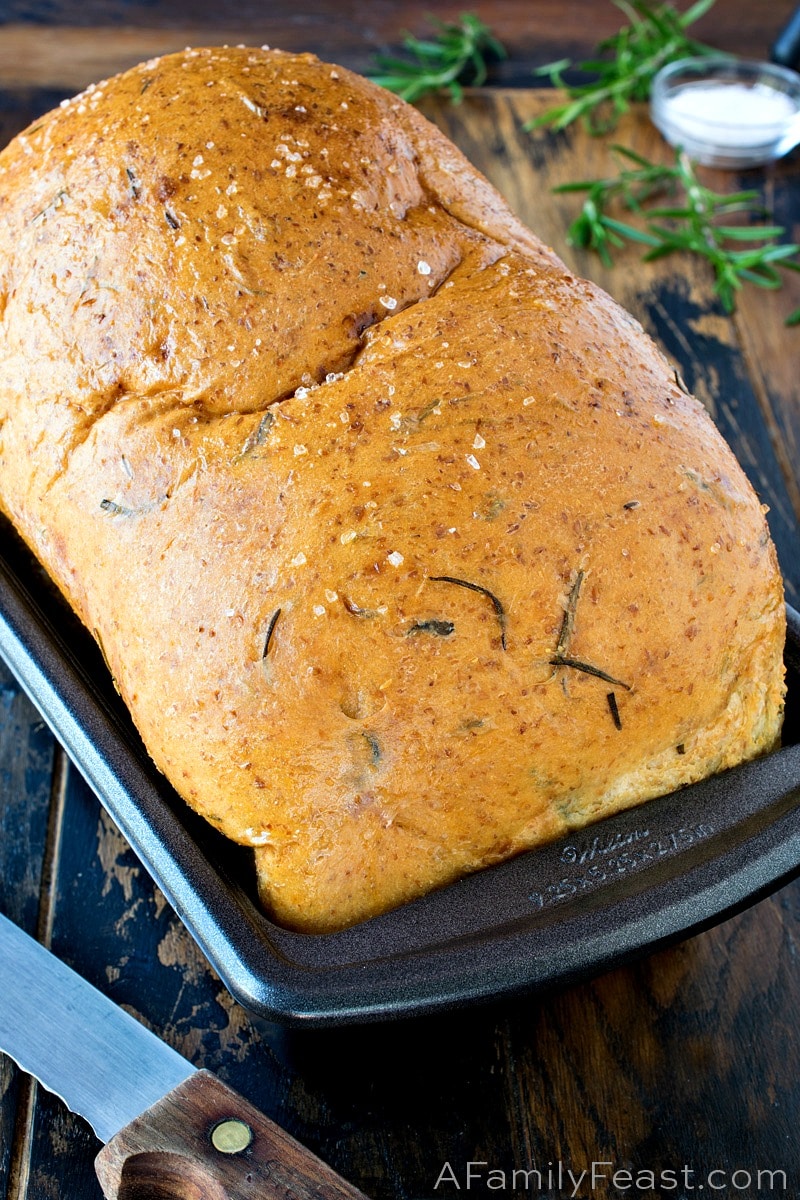
Hi everyone – Jack here. I’ve spent the last month or so trying to make a really good, nicely textured Rosemary Sea Salt Keto Bread, and after four attempts, I’m proud to say that I finally nailed it with this recipe.
I LOVE bread. But eating lower-carb these days has meant that most breads are (sadly) off limits for me. I made this keto bread recipe before, as well as this 90-second keto bread too, and they were good. But this Rosemary Sea Salt Keto Bread checks all of the boxes for me in terms of taste, texture and making me feel like I’m eating a ‘real’ slice of bread.
Now, I do want to point out that this Rosemary Sea Salt Keto bread is NOT gluten-free, but it is low in carbs at 2.4 net carbs per slice.
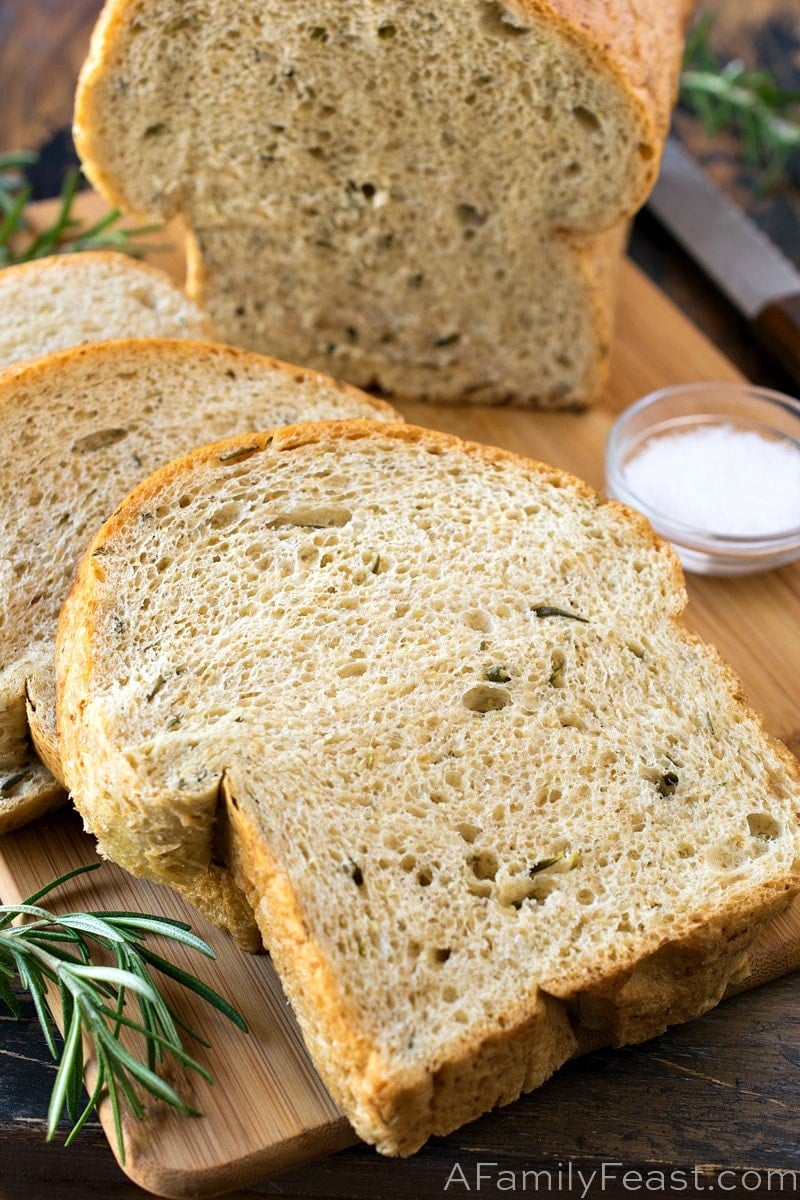
How do you make really good Keto Bread?
Most keto bread recipes out there rely on low-carb flours and xanthan gum powder as the base in their recipe – and ours does too. But – and here’s the trick – I also added wheat gluten to this recipe which adds that soft, bread-like texture that everyone knows and loves.*
Our Rosemary Sea Salt Keto Bread is also a yeast bread (which also contributes to that wonderful texture) but don’t let that scare you off. This is still a very easy and quick bread to make.
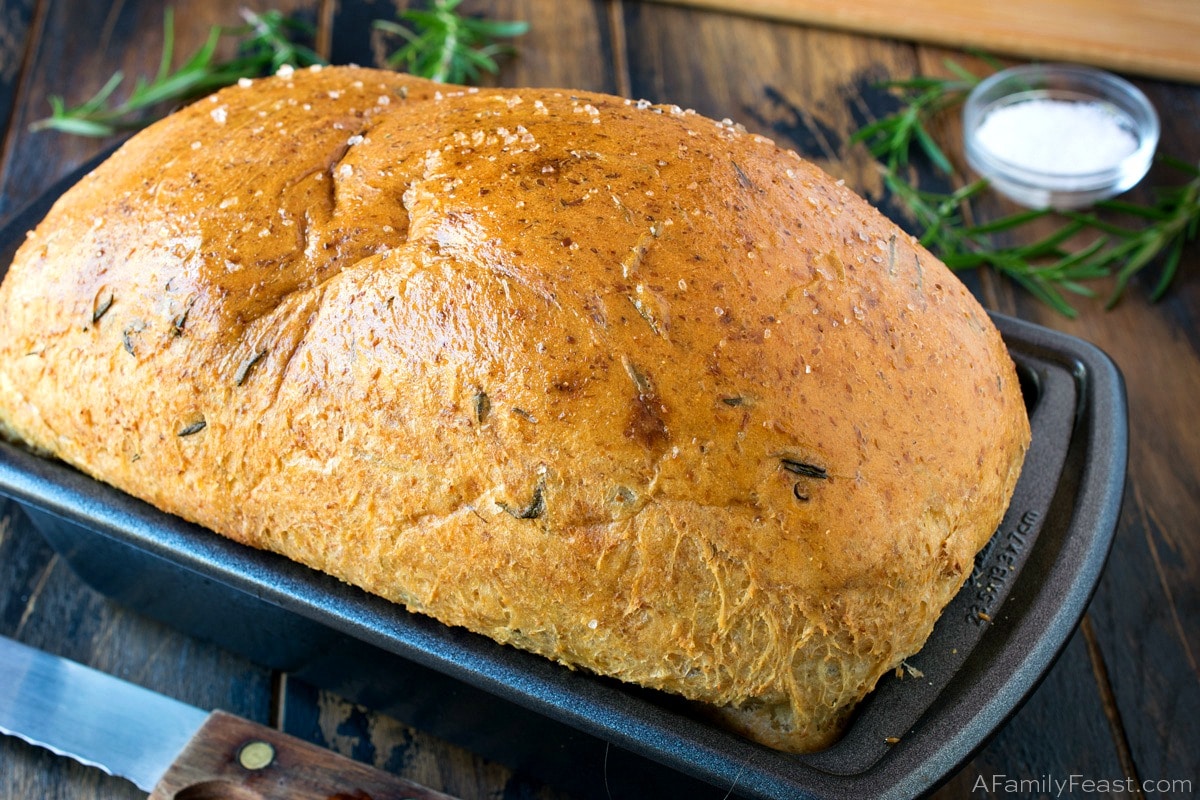
Today’s keto bread recipe uses ingredients that are easy to find online as well as in some well-stocked grocery stores including golden flaxseed meal, almond flour, oat fiber (don’t confuse that with oat flour), vital wheat gluten, and monk fruit sweetener (you could also use Stevia if you prefer). Once you have these ingredients in your kitchen pantry, the sky is the limit in terms of all of the different kinds of keto bread you can bake at home.
We flavored our Rosemary Sea Salt Keto Bread with (as you can tell from the name) fresh rosemary and coarse sea salt. Both give this soft, delicious bread some really fantastic flavor.
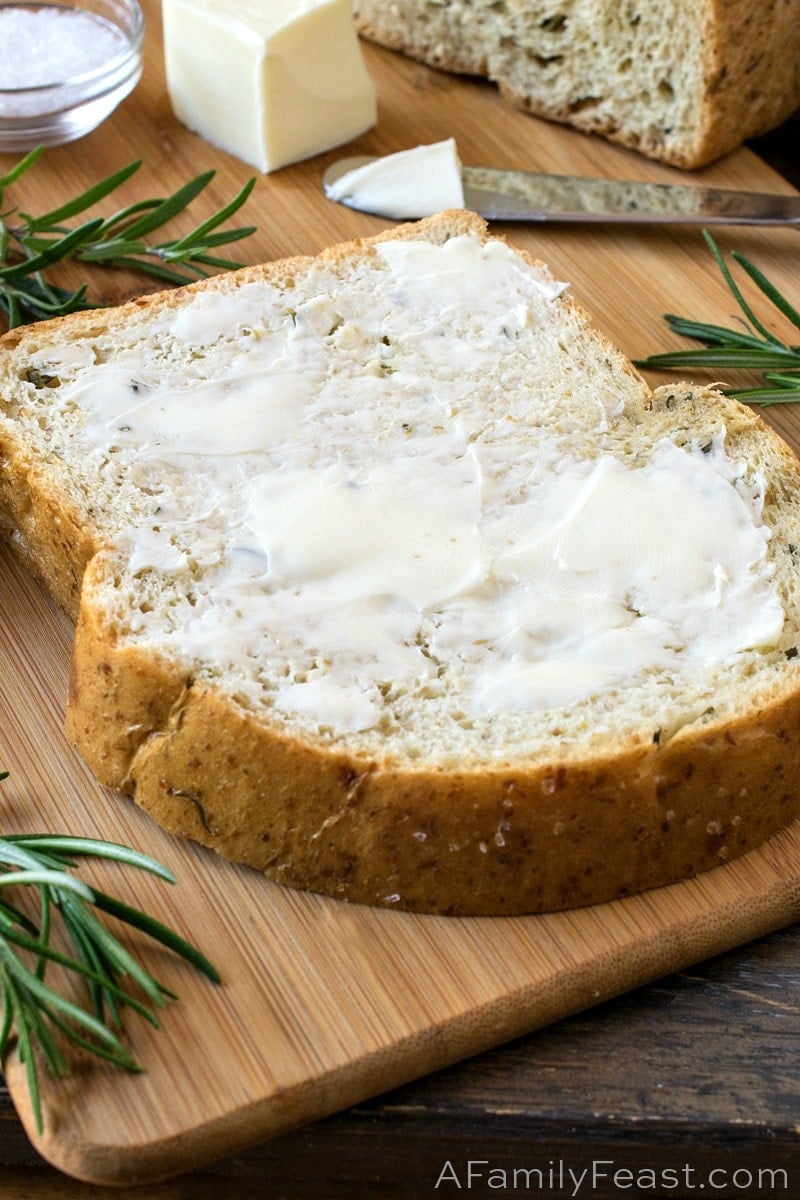
This Rosemary Sea Salt Keto Bread is great for sandwiches, toast, or simple bread and butter.
*Note: We’ve received a couple of comments from readers who have told us that using wheat-gluten in keto breads is the brain-child of a YouTuber named Deirdre. While we got our inspiration for this recipe from an assortment of other keto bread recipes and didn’t see Deirdre’s video ourselves until now, we wanted to note her as the original person (so we’re told!) who came up with the idea of using wheat-gluten to achieve that true, bread-like texture in keto bread recipes. You can see Deirdre’s video here.
You may enjoy these other Keto recipes:
- Keto Sheet Pan Pizza
- Beef and Kale Skillet {Keto, Low-Carb}
- Baked Western Omelet {Keto, Low-Carb}
- Chicken Tender Sauté
- Baked Sausage Egg Cups
We love seeing what you made! Tag us on Instagram at @afamilyfeast or hashtag #afamilyfeast so we can see your creations!

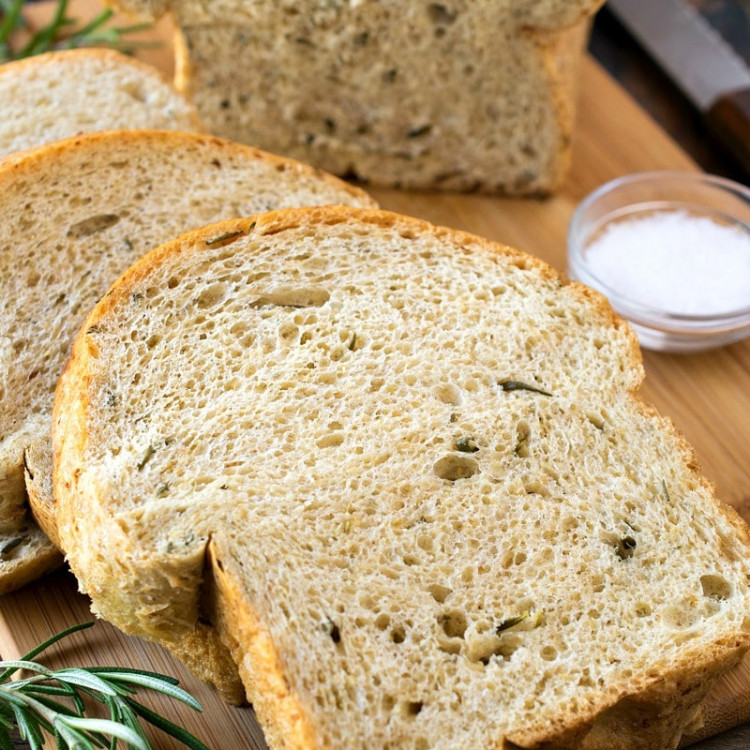
Rosemary Sea Salt Keto Bread
This Rosemary Sea Salt Keto Bread has all of the same flavor and texture of real bread, but with a fraction of the carbs.
Ingredients
1 cup tap water heated to exactly 110 degrees F.
1/2 teaspoon granulated sugar* or honey
2 teaspoons rapid rise dry yeast
3 whole eggs
3 tablespoons extra virgin olive oil
2/3 cup golden flaxseed meal
2/3 cup almond flour
3/4 cup oat fiber (not oat flour)
1 1/4 cups Vital wheat gluten
2 tablespoon monk fruit sweetener*, or granulated Stevia
1/2 teaspoon xanthan gum powder
1 1/2 teaspoon coarse sea salt (or kosher salt)
1 1/2 teaspoons garlic powder
1/2 cup fresh rosemary
Oil and coarse sea salt, for top of baked bread
Instructions
- Dissolve sugar in warmed water and add yeast. Set aside to bloom.
- In the bowl of a stand mixer with the paddle attachment, add eggs and beat five minutes on medium.
- Add olive oil and beat to combine.
- In a large bowl whisk together flax, almond flour, oat fiber, wheat gluten, monk fruit sweetener, xanthan gum powder, salt, garlic powder and fresh rosemary.
- Once the yeast has bloomed (froth formed on the top of the water), alternate adding the yeast mixture and the dry mixture until everything is in and mix on medium low for eight minutes. (The dough needs to be kneaded this long to develop the gluten.)
- Remove the dough and form into a neat ball with your hands then stretch to fit a 9X5X3-inch loaf pan. Do not oil or spray the pan, you want the dough to stick to the sides as it rises. Our 9X5X3-inch loaf pan was nonstick.
- Spray a piece of plastic wrap and place over the top of the pan so the dough doesn’t stick to the plastic.
- Proof for 1 ½ to 2 hours until doubled in size.
- I have an oven that I can set to 80 degrees F so I placed the dough in at that temperature then microwaved a 2-cup measuring cup filled with water until it was boiling hot and placed it in the oven with the dough. Then every thirty minutes I reheated the water until the dough doubled in size and was cresting the edge of the pan. In this humid environment, my dough rose in one hour and 45 minutes.
- You could also just use the inside cavity of your microwave with a container of hot water reheated every 30 minutes. Either have a tea kettle going to fill the cup or remove the dough and microwave the water then place the dough back in.
- Preheat oven to 375 degrees F with rack in center.
- Bake for 30 minutes until golden brown and when poked with a probe thermometer, will register between 190-200 degrees F.
- Remove from pan while hot by running a knife down each side to loosen, then cool on a rack. While hot, brush the top with olive oil and sprinkle on sea or kosher salt.
- Serve warm or cool and slice. Keep wrapped at room temperature like regular bread.
Last Step! Please leave a review and rating letting us know how you liked this recipe! This helps our business thrive & continue providing free recipes.
Notes
*Note: The sugar in this recipe is necessary to develop the yeast. The monk fruit sweetener is used to sweeten the bread and will not work in the initial blooming of the yeast.
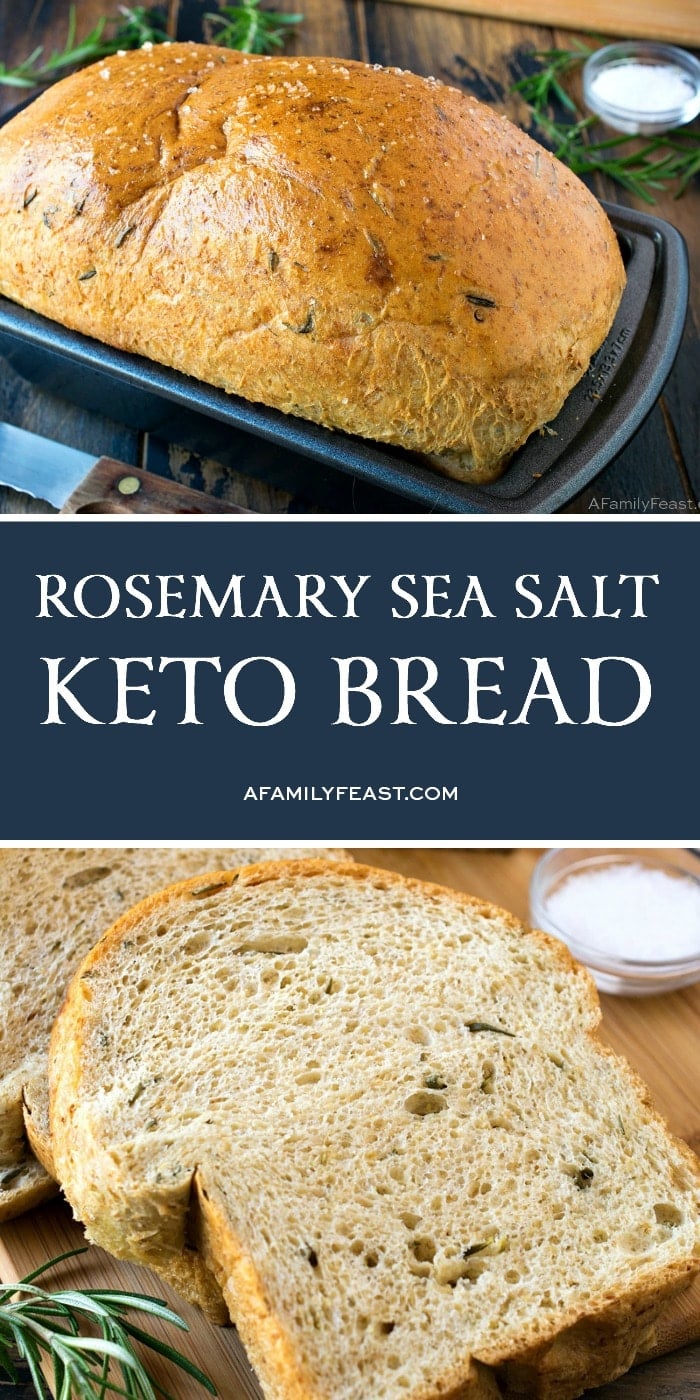
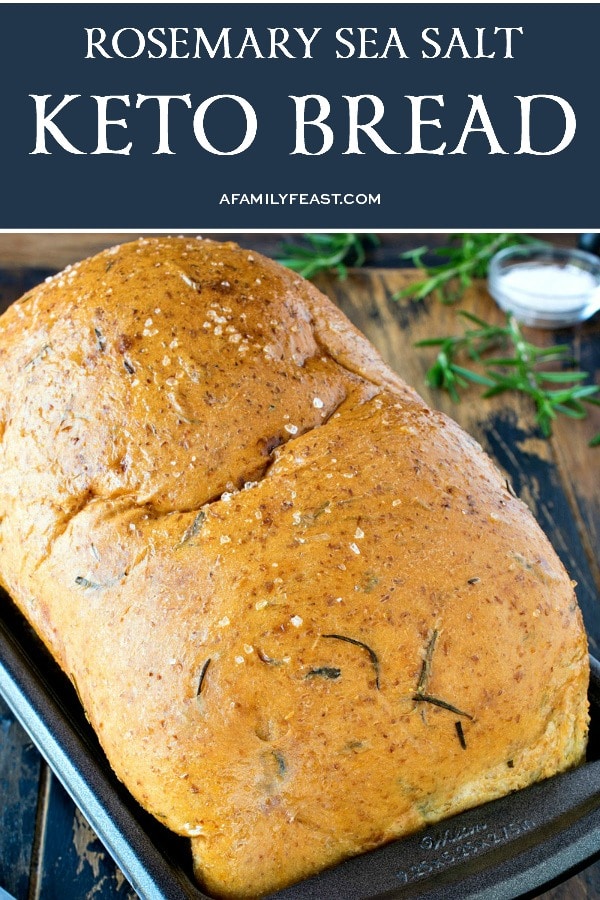
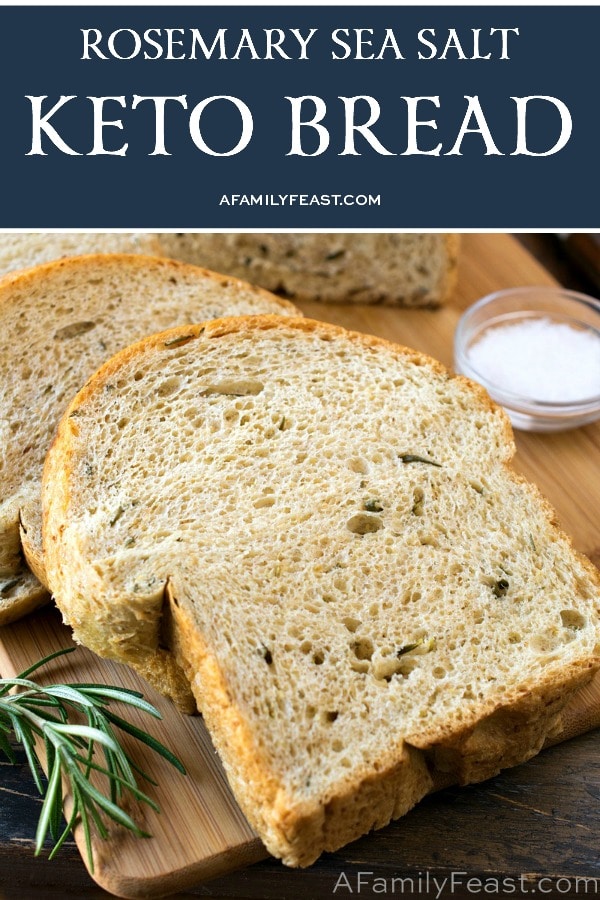

Hi, I tried the bread and it is delicious but The bread deflates when it cools down after coming out of the oven
Hi Rasha – Anytime a bread or loaf deflates right after coming out of the oven, it usually means that you haven’t baked it long enough. Every oven is different so you might need to bake the bread for longer than what we list in the recipe. Hope that helps.
Thanks to you guys I have FINALLY found delicious bread to eat on my Keto journey! Everything about this bread–especially the crust and the texture–is amazing! Followed your recipe to the letter…can’t thank you enough!
So glad to hear that you enjoyed the bread Katherine!
Loved this recipe! Followed exactly the first time. Wondering about trying it in a Dutch Oven. Has anyone done that? Then it would be a nice round loaf with possibly crunchy outer?
Hi Mary – We haven’t tried it ourselves and don’t recall any readers mentioning it as well. I’m not sure you’ll get the same crunchy outer crust as this is a dough more similar to a softer wheat bread rather than a sour dough which is what the Dutch oven breads are often made of. But if you try it – please let us know how it comes out!
Update to my review earlier today: I just finished a sandwich made with this bread. If you gave someone a sandwich made with this bread, they would never believe you when you told them it was keto! Amazing doesn’t even describe it – it tasted exactly like a very soft, delicious wheat bread! I could not believe it! The only issue I had was cutting it because the bottom had stuck to the pan so I had some wonky slices and had to slice it thick. But as soon as this bread is devoured (soon!), I will make it again but lightly spray the pan. Apparently, when Wilton says their pans are non-stick, they don’t really mean it! But thank you for the recipe. Really. Bread…REAL bread!! (Can’t wait for morning to have some real toast!)
Thanks again Marlene!
I made this bread today but haven’t tasted it yet (well, except for a tiny piece that fell off). It rose beautifully, I baked it, and was patting myself on the back (well, not literally or I would have dropped the bread) when taking it out of the oven because it was so pretty. It was a little darker than yours but looked so good. However, I could not get it out of the pan without the sides breaking. I used a Wilton non stick pan that is only a couple of years old. I have never had anything stick to it – my bread would just fall out if I tipped it upside down. But I did not grease it based on your instructions. Next time I will lightly grease just so I can get it out in one piece, or let it cool in the pan. If I can cut it tonight without it falling apart, I would be so thrilled! I will definitely try it again!
Thanks Marlene!
This has the best flavor and texture of any keto bread recipe I’ve tried, by far. The addition of that tiny bit of xanthan gum really improves the texture, especially. I’m going to try it for buns, etc. but wanted to thank and congratulate you! One question: Have you or anyone else worked out this recipe measuring by weight instead of volume? I’m a longtime bread baker and find that’s the most reliable way to get amounts exact.
Glad you enjoyed the recipe Brent – we, unfortunately, don’t have the measurements by weight – only volume as written in the recipe card.
What can I use if I don’t have oat fiber?
Hi Candy – Baking – and especially bread baking – is a precise science so there are no easy ingredient swaps without full kitchen testing. In the case of this recipe, the oat fiber is an important ingredient to give you the correct texture. If you aren’t willing to buy the ingredients called for in the recipe, you might be better off looking for a different recipe to make.
I have read that bamboo fiber (used in Victiri’s Keto Kitchen recipes) can substitute for oat. Like oat fiber, it is only available online.
Thanks for the suggestion!
The bread tastes good but stuck to the bottom of the pan terribly. The top browned way to
Much. I’ll try again though.
Thanks for your feedback Deb – we used a non-stick pan ourselves – that might help with the sticking issue!
Good afternoon, Love this recipe. Today I made it for the second time and my dough was very wet. I was as precise as I could be with the measurements. What do you suggest I add to get to the right consistency? Thank you for your time.
Desiree
If you think it is too wet to move forward and want to try and salvage it, and haven’t proofed it yet, I would try small amounts of almond flour, oat fiber and Vital wheat gluten. Start with a tablespoon of each and go from there. It doesn’t take much to tip this recipe in the wrong direction so when it doesn’t seem right, the only way to fix is with a little experimentation. I have made this a few times now and each time it came out right. BUT, wondering if the humidity level of the air might be a variable that could change the outcome from one day to the next.
Hope this helps,
Jack
Amazing!
Thank you Marta!